|
This has become one of my main strength exercises for the athletes I train over the last few years. Some might say that a unilateral exercise is inferior to its bilateral counterpart, but I would disagree. I actually prefer programming the unilateral movement. Don’t get me wrong, they are both great exercises, but I tend to favor the rear foot elevated split squat (RFESS). If you prefer the bilateral movement that is ok, but think about what is the best movement for the athlete that you are training. Most athletes are in a unilateral position when they play sports so why not get them into that position in the training facility. I have a few reasons why I prefer the RFESS. Some of them have to do with performance and some have to do with injury reduction. Side Note: If you injure an athlete while they are training they can’t play. This would be counterproductive. Here I am performing the Front Squat and RFESS, while Alex discusses point number 2 below. So here are a few reasons why you will see athletes at SportPerformanceU performing the RFESS as their main strength exercise.
1. Sport Specificity- I do think the term gets overused and abused in most cases, but for a higher caliber athlete where the term should actually apply, I’m all about it. If you are in a unilateral position during the high majority of the sport you play, mimicking that movement in the training facility is a great idea. Athletes that are sprinting while playing their sport would benefit greatly from using this exercise as their main strength movement. 2. Bilateral Deficit- Yes the elevated foot is helping, I get it, but not to the extent that you can ignore the significant difference when comparing the two. For example the highest RFESS I have seen done in my facility is 265lbs for 3 reps. This athlete's bilateral squat is nowhere close to doubling that number. End of story. 3. Neutral Spine- The number one role of a performance coach is not to increase an athlete’s speed, power or strength; it is to keep them injury free and ready to go on game day. One way to do this is programming exercises that will improvement athletic quality while minimizing risk of injury. The bilateral squat is a difficult exercise for many athletes to do properly. There are many reasons for this, but for the purpose of this point I will focus on the spine. Maintaining a neutral lumbar spine is difficult for most athletes once their thighs pass parallel to the floor. I’m not going to go into the intricacies of this point, but it is clearly an issue. By performing the RFESS this becomes a mute point, the lumbar spine can no longer go into flexion. Risk vs. reward must always be considered when programming exercises for your athletes. When it comes to maintaining a neutral spine, the RFESS wins. Agree or disagree that the RFESS should be your athletes main strength exercise, you have to agree that it is an exercise that most all athletes should be doing. If you prefer it to be an accessory lift, that’s fine, just make sure that your athletes are doing it.
1 Comment
James DeAndressi B.S, NASM-CPT has been interning at SportPerformanceU this summer and will be today’s guest blogger. James earned his bachelor’s degree in exercise science from Southern Connecticut State University and is planning on attending school this fall to become a physical therapist assistant. Below you will find his piece on why including a proper warm is so important. It is clear based on research, observation, and comparison that a good warm up before a workout can increase the overall quality of how you spend your time in the gym. The question is however, what makes up a good warm up and why is the warm up part of the workout important? All trainers may have different opinions and different ways of training but for the most part, it is fair to say that most qualified trainers in any setting should agree with the warm up being a key part to an individual’s daily routine. At SPU we will typically start a client with soft tissue work as well as some specific dynamic warm up exercises. Soft tissue work for a client will be mainly foam rolling or simple active massage unless the trainer is certified and/or licensed as a professional health care provider. They need to be legally bound to doing some type of manual soft tissue work on a client. Foam rolling is safe, effective, and backed by research to roll out fascia to fix cross linked muscle fibers. This will in turn make the muscles fire and perform the best it can for that specific person at that specific time. Foam Rolling Techniques A good warm up needs to consist of anything we as trainers believe will have a positive impact on our client during the workout. Mobility, or in other words, the ability to move freely through a given range of motion is one component to a good warm up. Exercises to increase range of motion include ankle dorsiflexion at a wall or shoulder wall slides. Corrective exercises are another key component. These exercises will be put on a client’s program depending on the results of some type of movement analysis. Corrective exercise is a broad topic but in the simplest of terms, they are specific exercises that will be targeting some type of human movement deficiency. Examples of some corrective exercises would be Unilateral or Bilateral Internal/External Rotation of the shoulder joint or hip joint and bird dogs to increase core stability as well as to strengthen a specific deep muscle connected to the spine which can cause pain. Trainers should take note of any types of movement deficiencies during every training session in order to progress or add/subtract corrective exercises. In other words, analyzing movement should not be an afterthought but should be constantly on a trainer's mind during sessions. To learn more about SPU’s specific biomechanical analysis, read our blog which gives some detail on this topic. Dynamic exercises are another way we can prepare a client’s body for the upcoming workout. At SPU this is the final part of the warm up before going into our power, strength, speed, and conditioning blocks. According to Eric Cressey, in his book Maximum Strength “we are focusing on raising body temperature which in turn will raise muscles temperature. Lubricating muscles and joints as well as increasing mobility in key joints while enhancing stability in others in order to perform strength movements more efficiently” is also part of the equation. Some examples of dynamic exercises would be leg raises or a lateral shuffle. Trainers who understand the importance of a well-balanced exercise program will have a warm up section that is not overlooked, rushed, or inefficient. For a client’s own personal well being, I would recommend changing trainers if they did not properly warm up a client before a workout. Fitness professionals should all look at the warm up as a line of defense, if you will, for decreasing injury. As fitness professional including a solid warm up is a necessity. There are exercises that are considered bad. Some because they can cause injury, others because they are just plain ridiculous. I’m sure you have seen some on YouTube that make you cringe! But there are also a lot of exercises that fall into a “gray” area. The gray area is more dependent on the specific individual performing the exercise. One exercise that is bad for one person might be great for another and vice versa. This is where exercises can get a bad rep. let’s review some common examples.
Most overhead pressing is considered a huge no no within the general population, and for good reason. Pressing a barbell from the front of your shoulders to an overhead position is usually contraindicative for much of the general population, which means from the back of the shoulders would be even worse. A competitive weightlifter that performs exercises such and the clean & jerk and snatch will on the other hand most definitely have to be able to overhead press to compete at their sport. Athletes that have developed the ability to do this exercise safety will use overhead pressing as a staple of their training program. There are two very different people, a desk jockey and a professional weightlifter. They probably will not and should not be performing the same exercises. It is much more important that the exercise is appropriate for the specific individual than just calling it a bad exercise. Again, there is a gray area for many exercises. The back squat is the king of exercises. Just ask anyone that trains high school football players. The back squat is without a doubt one of the best exercises to develop strength and athleticism. This does not mean it is appropriate for everyone. There are more people who have no right back squatting than the other way around and that includes high school football players. Can the individual perform a bodyweight squat with their thighs pass parallel? If not, then the person should not be performing a back squat. There are many things that an athlete can work on so they can perform the back squat, but those things have to come first. To find the true reason why someone cannot perform a back squat a battery of tests would have to be performed to assess the reason for the limitation. Once that is done and the individual performs the necessary steps then back squatting can be added to the training program. A simple rule when deciding if someone is capable of performing an exercise is to have them execute it with just their bodyweight. If they pass, feel free to add that exercise, if they don’t, find a way to fix it. There are also times when unfortunately you probably should not perform a certain exercise ever again. If you are a desk jockey and herniated a few disks, deadlifting might be out for some time, if not for good. I for one always look for variations of an exercise to see if it would work. With this example single leg deadlifts might be able to be added back in eventually. And if I had to choose between no deadlifting and the single leg variation I am taking the later every time. What it really comes down to is if an exercise is appropriate for the certain individual, not if the exercise is good or bad necessarily. An exercise can only be bad if one is not capable of performing with proper form. The deadlift is one of my favorite exercises for building raw strength. It is up there with one of the best exercises you can have your athletes perform. There are many options that you can choose from. You could always use the conventional deadlift with a barbell, Romanian deadlift, sumo deadlift or one of my personal favorites, the trap bar or hex bar deadlift. Either one you choose it is a win in my book. Most young athletes walking into the training facility for the first time have no business even looking at a deadlift, let alone trying to perform the movement. They cannot even hinge their hips! So that leads to the question, how do we teach the deadlift to athletes that cannot even properly hinge their hips? There are many options that I like to use in unison and some by themselves. Here are my top three ways to teach the deadlift. 1. Hip Hinge w/ Dowel & Bench. Have an athlete place a dowel along their spine. The dowel should run from the back of their head to their tail bone. One hand holds the dowel behind the head and above the tail bone. Have the athlete take a shoulder width stance with their feet underneath a bench. The bench is used to force the athletes to hinge their hips and not make the movement from their knees. The athlete should pack their neck, which means they should keep their chin tucked. Make sure the athlete keeps three points of contact with the dowel at the head, upper back and tail bone. 2. Pull Through w/ Band or Cable. Have the athlete grab the band or cable attachment (rope attachment). Take a few steps forward so there is tension on the band or cable. Have the athlete hinge their hips back while keeping a neutral spine. The hands should come to the middle or the athletes legs. The pull from the band or cable somewhat forces the hip hinge to take place if it is not totally there yet. Instruct the athlete to drive through their heels and extend their hips. 3. Kettlebell Deadlift. When this movement is used it should mean that the athlete is hinging their hips properly and do not need physical feedback or assistance. The athlete should set up the kettlebell between their ankles, hinge their hips back, grab the kettlebell and perform the deadlift. This three step process can take one day, week, month or season. It does not matter how long it takes, but it must take place before any athlete is allowed to perform a deadlift using any bar. Your athletes will move better, reduce their chance of injury and get stronger if this progression is followed
Everyone loves doing what they are good at, whether it be push ups, squats, deadlifts or any other movement. But ask yourself, how much better are you making yourself if you always focus on your strengths. If you have a great looking squat and your deadlift is lagging behind try taking a few weeks or months to focus on bring your deadlift up to par. I’m not saying don’t squat, but make the focus getting good at deadlifts. Ask yourself what it is about the deadlift that you struggle with. Is it the lift off, lock out or something else? Make a program focused on bring up your weakest link. As it pertains to the deadlift let’s say that you struggle with your lock out. You might want to start with adding in more heavy rack pulls higher up on the thigh. What if you are a bit slow off the floor? Maybe you need to throw in some speed work with lighter weight. Is your upper back strong enough to lift big weighs? If not, throwing in some more rows and chins into your program will help. At the same time there should always be balance in your training program. An example of this would be those that love to bench press (you know who you are!), but maybe sneak in a pulling exercise once or twice a month. This will lead to weaknesses and imbalances creeping in. The last thing you want is to be injured from a training program that is unbalanced and poorly written. For our athletes out there this is also extremely important. During the season, depending on your sport, attention should be paid to what imbalances and weaknesses usually show themselves during your season. If you are a quarterback your plant foot and throwing arm will be getting more work during practice and games. This could lead to overuse injuries if not cared for during the season. An in season training program needs to focus on preventing the opposite limbs from lagging behind and also making sure overuse injuries do not present themselves in the more active limbs.
Make sure you are working with your performance coaches to have the best chance at avoiding injuries. It is up to you to make sure your weakest links are brought up to par, if not you will always be held back from your true potential and possibly on the side lines with an injury. Whether you are training top level athletes or the average soccer mom, chances are that knee pain has been an issue in some way, shape or form. Now the majority prefer to take it easy and not train while sorting out an injury. And depending on the injury that makes perfect sense. If you tore your ACL and MCL last week, I don’t plan on seeing you next week! But the majority with little nagging issues would be best suited to continue some form of training depending on the severity of the injury. Always consult with your medical team beforehand to figure out what is actually going on in your knee. If the team gives you the ok to continue training then here are some ideas about how to still get a great training session when managing knee pain. 1. REDUCE THE AMOUNT OF CONTINUOUS FLEXION AT THE KNEE. Depending on what exacerbates the knee pain, reducing the amount of flexion (bend) at the knee could greatly reduce the level of pain. Avoid knee dominant exercises such as squats and lunges. Stick with hip dominant movements that focus on keeping the hips high. Exercises such as double or single leg Romanian deadlifts, lateral mini-band walks and supine bridge variations could all work. Below I am performing a single leg Romanian deadlift with the assistance of a TRX. 2. FOCUS ON THE CORE. If there is a need to reduce the amount of volume in one area, focus on something else for the time being. The core can be trained from multiple angles and recovers quicker than larger muscles groups. 3. FOCUS ON UPPERBODY PUSHING AND PULLING. To somewhat piggy back on the previous point, focusing on the “real” core is also another option. The core has been said to be what lies between the shoulders and hips, which leaves a lot of room for pushing and pulling. Pushing does usually get a ton of focus from many programs, but there is usually room for improvement with the amount of pulling. Throw in some more rowing and chin up variations. 4. FOCUS ON THE HEALTHY KNEE. If there is still one healthy knee I suggest single leg variations such as step ups, single leg squats and single leg deadlift variations, all of which can be regressed to meet the needs of the athlete. Below I am performing a single leg squat with the assistance of a TRX. It goes without saying, but I am going to say it anyways. Consideration of the actual injury has to be taken before trying any of these recommendations. The training program will be based on the diagnosed injury and the results of the analysis. If there is pain during an exercise it should not be included in the training program. Youth performance training provides a foundation of quality movement from which speed, power and strength will be built. These qualities are needed to perform at ones best in their athletic endeavors. Most of you would agree that to begin building a house you need a foundation, an area to build upon, something that everything else will be added to. It is the same thing with any athlete that starts a performance training program. We must build the foundation of the movements that are necessary to perform well in the training facility and on the field of play. You would be amazed with the inability of young athletes to perform basic movements such as skipping, jumping, hopping, shuffling, pushing and pulling.
The performance training program, if done properly, will make each and every athlete move better, get stronger, be faster and produce more power. These are things that most of you would expect to happen. The other side of things that is sometimes over looked is reducing the number of injuries. No one can prevent all injuries from taking place, but a great training program will greatly reduce the number of injuries that do take place. This brings me to the athlete’s specific goals. Each and every athlete wants to be faster, stronger and more powerful, but they also want to be able to play their sport and not be sitting on the sidelines with an injury. There are specific goals that each athlete wants to accomplish. A first basemen playing baseball wants to produce more rotational power in the transverse plane from medicine ball work than a basketball player does. An offensive lineman playing football wants to produce more horizontal force in the sagittal plane from bench pressing than a quarterback playing the same sport does. These two examples are ones that are somewhat for more of an athlete that has already laid down the necessary foundation to proceed to a more specific training program, but I hope the point is getting across. Knowing what each athlete needs at each point during their training cycle is key to developing an all around successful athlete. An athlete must first learn how to hinge their hips properly before any hip dominant movement is loaded. An athlete must be able to stabilize their torso before any lunge variation is added to their program. The list goes on and on. The point being, every athlete is treated as an individual with things that they need to work on that are specific to them. Like I mentioned early each athlete has to lay the foundation before all the bells and whistles come out….they have to earn it. It is not given to them without them working hard and smart for it. Each training session builds upon the previous one. It is programmed and concise, it is not randomly throw together. There is always a reason why something is being done. A great athlete is built over their career, not over the month before each sporting season starts. It is hard to be great, that is why so few do it and settle for a shell of what they could have been. Not everyone is born with the same physical gifts, but everyone is born with the ability to outwork their competitor. Youth performance training not only teaches athletes to move better and be stronger, it teaches discipline, dedication, sacrifice and to have a work ethic that will help them succeed during their lives. It teaches them that they must put forth effort to see results, nothing is given to them. Not everyone will get a trophy for just showing up, it’s up to them to go out and earn it. Get your athletes committed to a training program that will help teach them all these qualities. |
Archives
July 2024
Categories
All
|
Proudly powered by Weebly


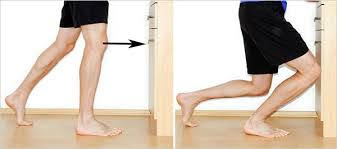
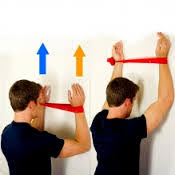
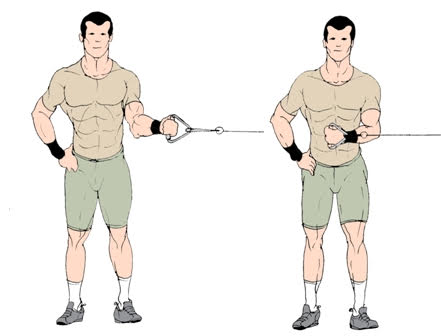

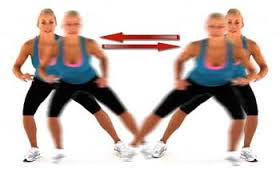
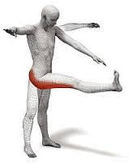





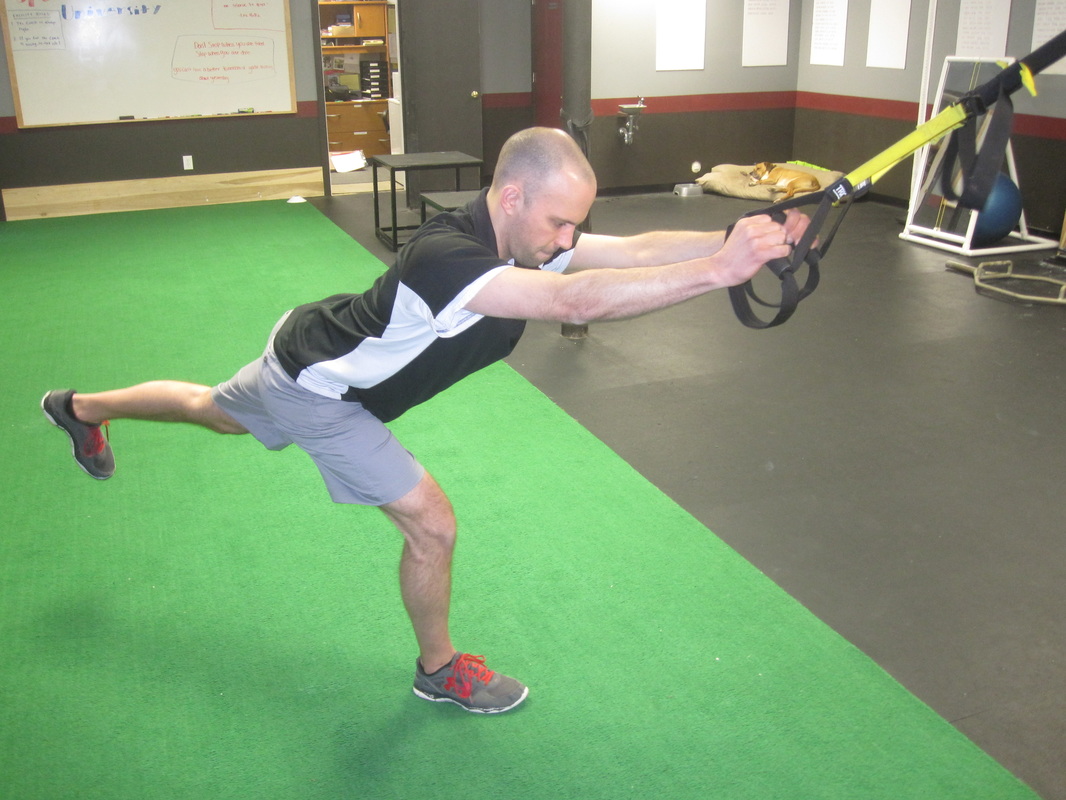
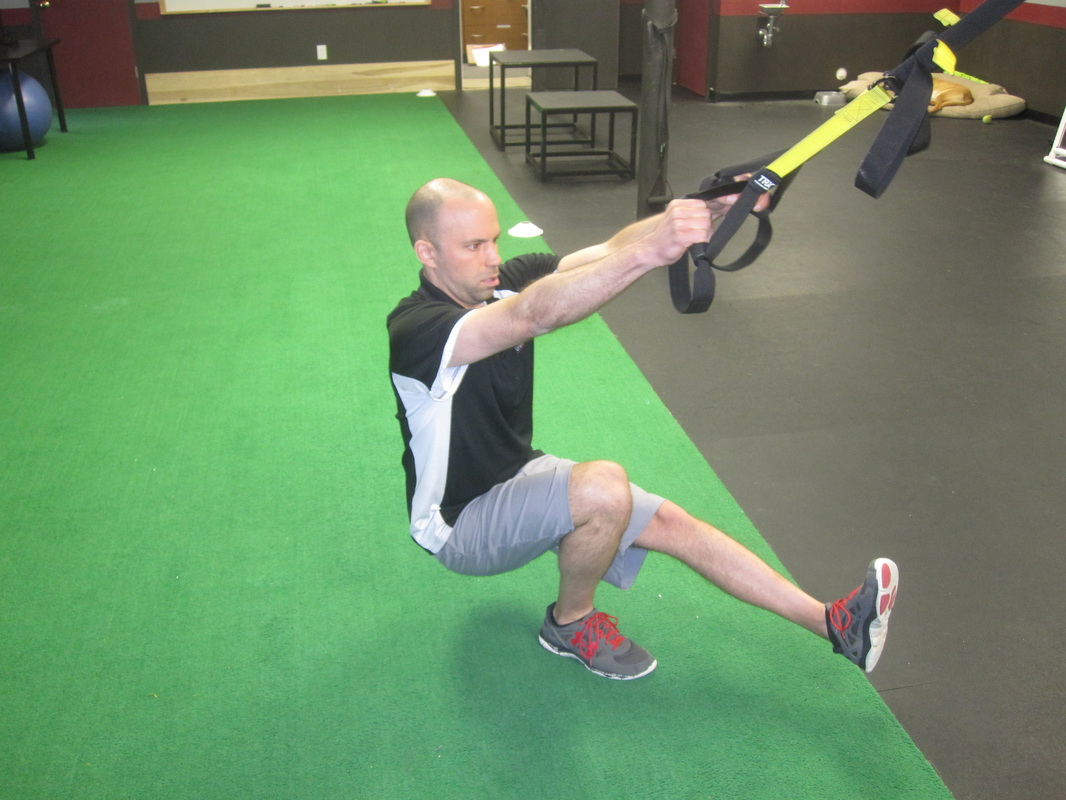
 RSS Feed
RSS Feed